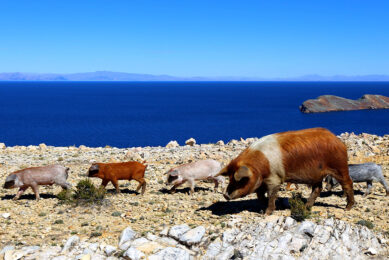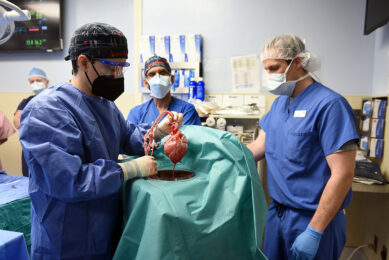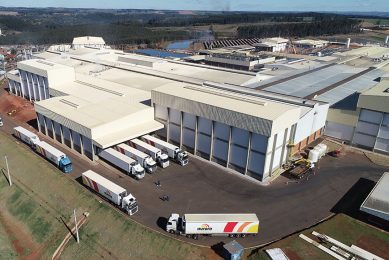The pig industry just continues to inspire

Ever since he decided to write about pigs, management expert John Gadd has managed to write 3,000th article on pig production. Over 300 of them were for Pig Progress, since he joined in 1991. Now how exactly did John manage to do that?
Others may smoke, drink or drive fast cars. I’m a ‘writerholic’. Writing relaxes me. Sure, 3,000 sounds an awful lot, but it works out as under a week over some 60 years. And there are more reasons that have kept me going…
There is so much to cover on pigs
Finding new subjects of interest has never been a problem. I’ve lived through the golden age of pig technology. Even today I discipline myself to putting by one whole day a week, not ‘working’ but seeking out new information. There is so much out there. I need to find it and talk about it.
Information technology is not drying up. Not at all. Look at the following; just 3 important ones from about 20.
- The astonishingly promising field of genetic modification, yet there are nervous but blinkered people who bad-mouth it. That is about as sensible as saying 100 years ago that electricity had no future.
- The deep and yet to be fully explored field of immunity in pigs. Not only the technical aspect of it but how the owner and his stockpersons can understand how they can influence it for the better in their pigs. The 1st line against disease. The knowledge is there now. Use it.
- Records and the use of figures. Far too many people are not recording at all (you cannot manage what you do not measure). Plain stupid. On the other hand, many enthusiastic recording schemes are far too complex. There are just 15 things vital to running a profitable breeding unit and 8 for a grow-out unit, no more. Simple to understand, note down and act on. That way they get done and results improve.

A few weeks ago, health and nutrition expert Edgar Garcia Manzanilla also held a plea for recording and even benchmarking. Read why here.
Profit is important to write about
My writing mantra has always been ‘profit before performance’. Nearly all new information is based on better performance – a wily and seductive temptress. Wily through commercial promotion, and seductive from research workers’ results. In no way am I denigrating the efforts of commercial firms to sell their products, or the valuable work of the scientists, but before the producer can take a decision on what he/she reads is told, an econometric (value for money) overlay is essential.
In farming language, I always ask, “what does that mean in dollars and cents?” That is almost never done. And as I have shown over the years, how it can be done.
Definition of pig performance terms
Which brings me back to records. First, we need a global definition of performance terms. At present we are not comparing apples with apples from pig industry to industry. Confusion! Next, we need to adopt terms which bring likely profit as well as performance to it.
Saleable Meat per Tonne of Food (MTF) is better, simpler to establish, and more applicable under farm conditions, than feed conversion ratio (FCR).
So too is Return on Extra Outlay (REO). Very useful indeed in comparing the true value of the becoming impossible plethora of new or revised commercial products we are being hit with every year.
But which one of them should you choose? Annual Investment Value (AIV) is in the same ballpark when taking a decision on how best to spend your hard-earned capital. Weaner Weight per Sow per Year is far better than weaners/sow/year. So many more useful terms available now – and ample material for me to write about!
Read more expert opinions on pigs in our Expert Section
Reporting on pigs can be done better
New technology is well covered, but clumsily. We communicators can do better. There is often worthwhile information in our graphs and tables, but often difficult to understand and to grasp quickly enough. Readers have a short ‘patience-span’ when faced with blocks of comparative evidence. I have always found it useful to provide under each table a ‘What do the above figures suggest (and occasionally what don’t they show, which can be even more important!).
Language in technical articles on pigs
Some of the language of technical articles can be stilted. Boring! The need to stick to technical accuracy tends to make it so, thus articles seem to be written more as ‘lectures’, academics and some worthy consultants come across like this in their writings. Off-putting, not ‘communication’. I’ve always talked to my readers in a conversational way about complex subjects and with no loss of accuracy if I can help it.
Maybe that is why a succession of patient editors have put up with me for over 60 years!











